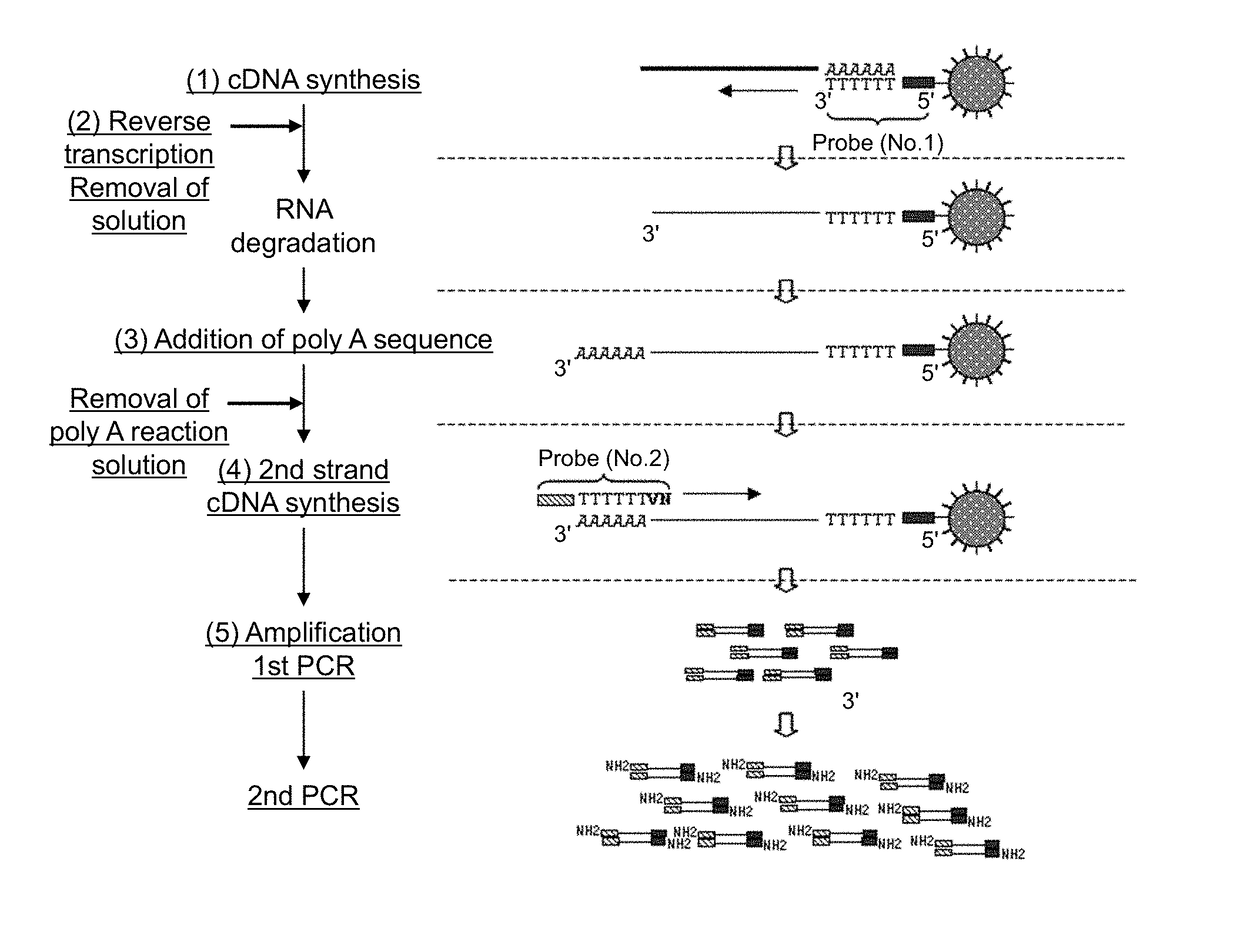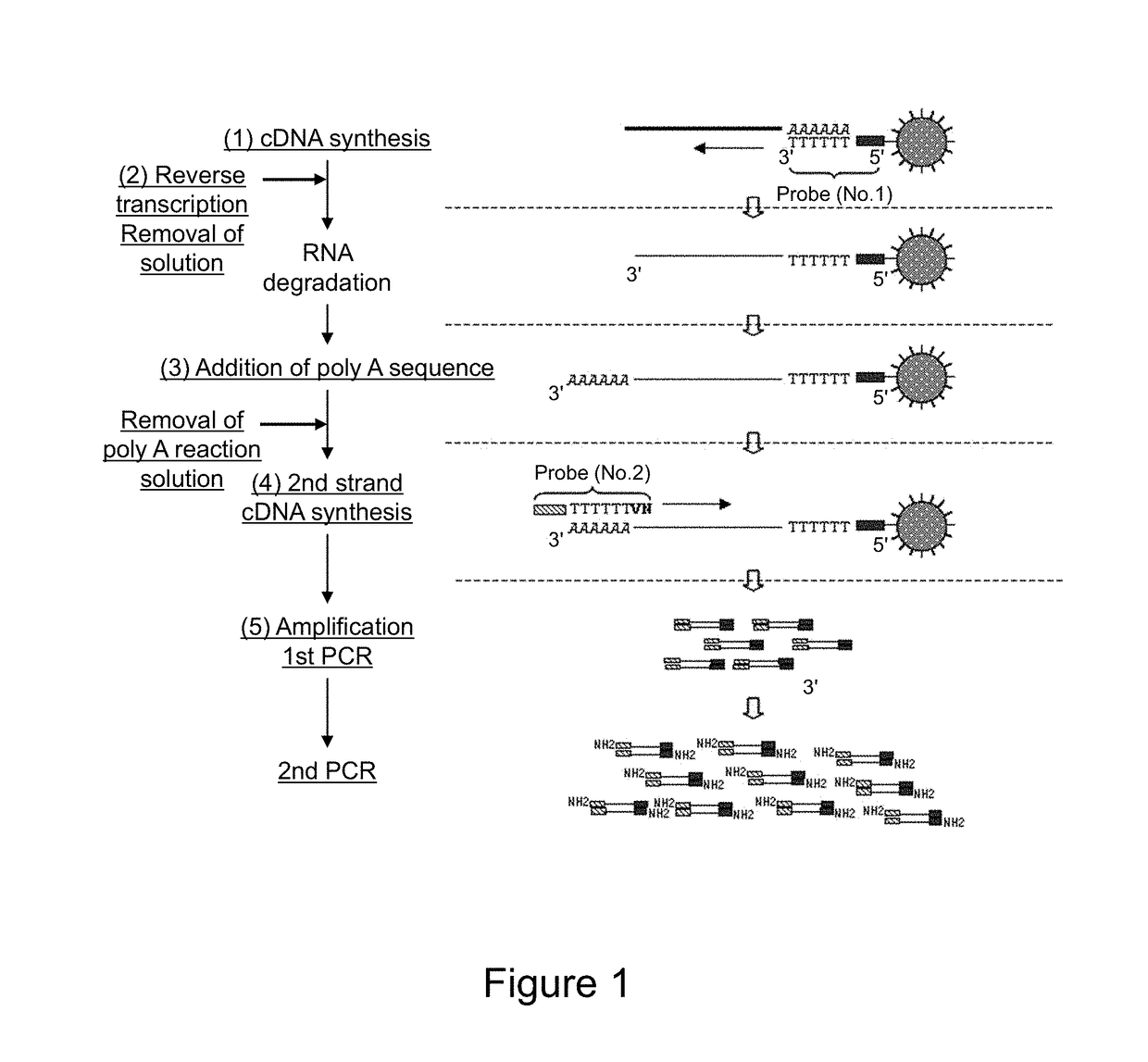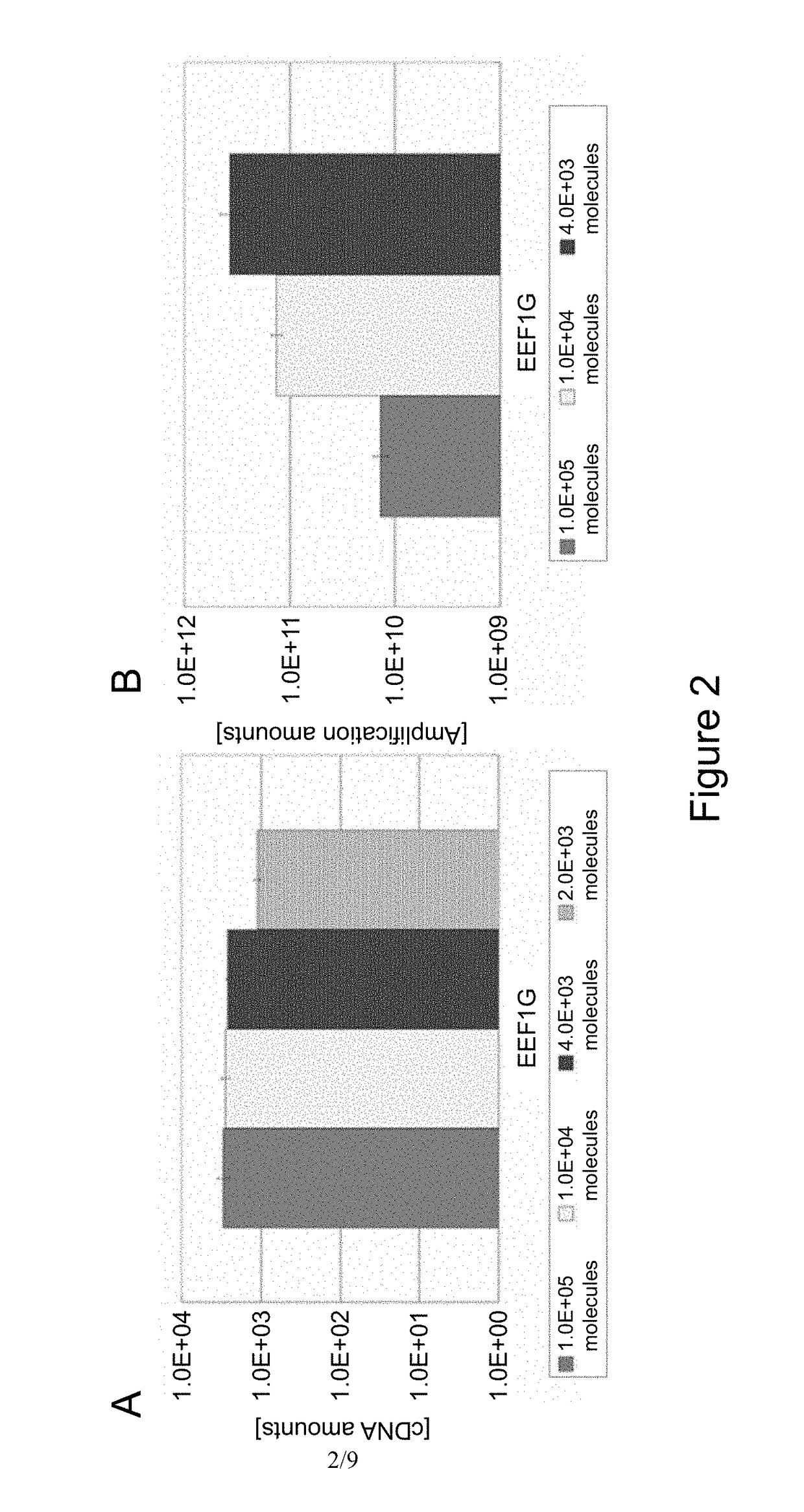Method for amplifying cDNA derived from trace amount of sample
a trace amount and cdna technology, applied in the field of analysis of trace amount of nucleic acid components, can solve the problems of insufficient true expression analysis, insufficient conventional analysis method, and inability to analyze expression based on the average expression of a cell population, etc., to achieve gene expression analysis at a single cell level, and widen the range of application.
- Summary
- Abstract
- Description
- Claims
- Application Information
AI Technical Summary
Benefits of technology
Problems solved by technology
Method used
Image
Examples
example 1
Preparation of a Sample for Large-Scale Sequencing from a Single Cell
[0143]In this example, an example of the protocol of the present invention will be described.
[0144]
[0145]UP1 probe (SEQ ID NO: 1) prepared by adding biotin (2 molecules) to the 5′ terminal was immobilized to magnetic beads (Dynabeads MyOne Streptavidin C1; Dynal). First, 120 μL of magnetic beads (about 1.2×109 beads) was transferred to a 2 mL-tube (Eppendorf). To the tube, 120 μL of 1× B&W buffer (1M NaCl, 0.5 mM EDTA, 10 mM Tris-HCl pH8.0, 0.1% Tween20) was added and mixed. Subsequently, the tube was set on a magnet to separate magnetic beads toward the wall surface of the tube. After that, the supernatant was removed. To the tube, 120 μL of 1× B&W buffer was added to resuspend the magnetic beads. This operation was repeated further twice to wash magnetic beads, and a 120 magnetic beads solution was prepared.
[0146]Subsequently, 2 μL (about 4.8×1012 molecules) of 4 μM UP1 probe (IDT) was added to 118 μL of 1× B&W b...
example 2
Evaluation of Amplification Efficiency and Amplification Bias
[0182]To evaluate amplification efficiency of DNA and amplification bias in each step of the protocol shown in Example 1, the amount of each gene was measured by a quantitative PCR method. Quantitative measurement was performed by use of 7900HT Fast Real-Time PCR system apparatus manufactured by Applied Biosystems. First, cDNA library was prepared from a single cell of HCT116 in accordance with the protocol of Example 1 and the amounts of cDNA of five types of genes (EEF1G, B2M, SDHA, TBP, and GUSB) were measured. As the quantitative PCR of these five types of genes, a TaqMan Probe method using an MGB fluorescent probe was employed. MGB fluorescent probes and PCR primers for individual genes are shown in the following SEQ ID NOs: 6 to 20. As a reaction reagent of the quantitative PCR, Premix Ex Taq (Takara Bio Inc.) was used. The reaction reagent was prepared in accordance with the manual attached. The amount of each cDNA ...
example 3
Optimization of the Amount of Probe to be Immobilized to Magnetic Beads
[0188]To optimize the amount of UP1 probe to be bound onto magnetic beads for capturing mRNA, magnetic beads were prepared by varying the amount of UP1 probe to be immobilized, and reverse transcription efficiency and cDNA amplification efficiency were determined.
[0189]According to the method described in Example 1, UP1 probe was immobilized to magnetic beads via a biotin-avidin bond. At this time, as the amount of UP1 probe to be reacted with the magnetic beads, four different amounts: 200 pmol (about 1.2×1014 molecules), 20 pmol, 8 pmol and 4 pmol, were used. If the UP1 probe is subjected to the reaction in these amounts, it is calculated that UP1 probe of 1×105, 1×104, 4×103, and 2×103 molecules are to be immobilized per magnetic bead, respectively. Then, mRNA (2 pg) was captured by use of these four samples of UP1 probes immobilized magnetic beads (107 beads) and subjected to a reverse transcription reaction....
PUM
| Property | Measurement | Unit |
|---|---|---|
| temperature | aaaaa | aaaaa |
| temperature | aaaaa | aaaaa |
| volumes | aaaaa | aaaaa |
Abstract
Description
Claims
Application Information
 Login to View More
Login to View More - R&D
- Intellectual Property
- Life Sciences
- Materials
- Tech Scout
- Unparalleled Data Quality
- Higher Quality Content
- 60% Fewer Hallucinations
Browse by: Latest US Patents, China's latest patents, Technical Efficacy Thesaurus, Application Domain, Technology Topic, Popular Technical Reports.
© 2025 PatSnap. All rights reserved.Legal|Privacy policy|Modern Slavery Act Transparency Statement|Sitemap|About US| Contact US: help@patsnap.com



